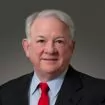The Securities and Exchange Commission (SEC) has proposed a definition of "family office" for purposes of the Investment Advisers Act of 1940 (the "Act"), as amended by the Dodd-Frank Wall Street Reform and Consumer Protection Act (the "Dodd-Frank Act"). The new definition, once final, will identify those family offices that will be exempt from federal investment adviser registration and regulation when certain amendments to the Act become effective on July 21, 2011 . As of that date, the "fewer than 15 clients" exemption upon which many family offices currently rely will no longer be available. Comments are invited by the SEC on the proposed "family office" definition though November 18, 2010.
Other Dodd-Frank Act changes of interest to family offices may include those that will ease federal registration and regulation requirements applicable to private fund advisers with less than $150 million in assets under management. For more information on this subject, see our previous memo, " The Impact of Dodd-Frank on Managers of Private Funds."
Overview of the Family Office
Family offices provide financial, tax, estate planning, and other services to wealthy families. Often these services include managing a portfolio of securities or advising family members on investment decisions for a fee. These service offerings would ordinarily require registration and result in regulation under the Act. However, until now, most family offices have relied on an exemption under the Act for investment advisers with fewer than 15 clients.
Some family offices have applied for no-action relief from registration with the SEC if they have 15 or more clients. The SEC has generally granted the requested relief if the family office met certain tests designed to ensure that it truly was serving only family clients.
On July 21, 2010, President Obama signed into law the Dodd-Frank Act. Taking aim at hedge funds, private equity funds, and other small investment advisers that previously avoided regulation, the Dodd-Frank Act repealed the exemption for advisers with fewer than 15 clients effective July 21, 2011. Without some adjustment, this reform would have had the unintended consequence of subjecting the family offices who relied upon that exemption to burdensome and unnecessary regulation. The purpose of the amendment was to provide protection to investors seeking investment advice; it was not meant to regulate a family's management of its own wealth.
However, there is good news for some family offices. As a result of their lobbying efforts, the Dodd-Frank Act added a new provision to the Act that specifically exempts certain family offices from registration and regulation under the Act. The SEC was assigned the job of defining the term "family office" for purposes of the exemption. The traditional single family office will likely be exempt from registration under this definition. The multi-family office that serves several families but still fewer than 15 clients will likely not fall under the definition and will feel the greatest impact.
The Proposed Rule for the Family Office
Under the proposed rule, a "family office" is an entity that: (1) has no clients other than family clients, (2) is wholly owned and controlled by family members, and (3) does not hold itself out to the public as an investment adviser. This definition codifies the previous approach taken by the SEC in its no-action letters dealing with this topic for family offices that could not satisfy the "fewer than 15 clients" exemption.
This proposed rule is meant to include all those, but only those, with "close ties" to the founder or the family office. The SEC is trying to reach and include within the family those with common interests and common purpose, where close regulation of the adviser is not warranted to protect the clients' interests.
Family Members and Family Clients
The demarcation of who will be treated as a family member is at the core of the proposed rule. The SEC has taken a modern approach to this definition. Immediate family members are included in the definition – spouses, children, and all lineal descendants are treated as "family members." Recognizing that new patterns of wealth accumulation have developed in recent years, parents are also included as family members. This responds to circumstances where younger entrepreneurs and investors are the ones who have made the fortune and wish to include their parents in the family office structure. Left out of the proposed definition, but left open to comment from the public by the SEC, is the role that other ancestors, including grandparents, uncles, aunts, and others may play in the definition of family member. And responding to the changing dynamic of families, the proposed definition also includes adopted children, stepchildren, and spousal equivalents. The term spousal equivalent tracks the definition currently found in other SEC family relationship definitions and includes cohabitants whose relationship is similar to that of spouses. While open to interpretation and potential confusion, the inclusion of spousal equivalents will allow family offices flexibility in managing the complex and important relationships of the modern family.
Because the inclusion of "family members" is driven by the close ties to the founder of the family office, some limitations are included in the proposed definition. Former spouses, and stepchildren involved from a former spouse, will not be allowed to continue to invest through the family office if the relationship to the founder ends. Existing investments may be maintained and advice as to them received, but further investment will be prohibited.
Family members are the most basic client of the family office. But because family members often use sophisticated investment techniques, a wide range of family-related entities are also included in the term "family client." Such family clients include trusts, charitable entities, partnerships, corporations, LLCs, and other organizations. Also falling within the definition of "family clients" are key employees of the family office and recipients of "involuntary transfers."
Key employees include executive level employees, directors, trustees, and partners. The term, as proposed, also includes other employees who have directly participated in the investment activities of the family office, or at some other company, for at least 12 months.
Involuntary transferees who take from a family client upon death or other involuntary transfer and who do not otherwise come within the definition of family client themselves are deemed to be family clients for four months following the transfer event. Thereafter, they must transfer the assets out of the family office. The SEC felt this was a sufficient grace period to either permit the family office to meet the requirements of the Act to serve as an investment adviser or provide for the orderly transition of the assets to a registered adviser or to another permitted arrangement.
Family Control
Also important to the proposed rule is the concept of family control. The entity that provides investment advice and services must be wholly owned and controlled by a single family to meet the definition of a "family office." The proposal assumes that the family is in the best position to protect its own interests and does not need the protection of the federal securities laws regulating investment advisers.
Not included within this proposed exemption, then, is the multi-family office. Where families of distant or no relation have pooled assets to reduce overhead costs and gain efficiency in services, the registration and regulation requirements may continue to be very real. This is not a substantive change in the SEC's position regarding multi-family offices, however. Private trust companies that include distant family relations that are acting as a family office – and providing regulated services to many generations of a family – may find some challenge in meeting the "family control" requirements of the new rule. However, those family offices would have faced the same challenges under the repealed exemption if they had more than 15 clients. Continuation of these arrangements will involve weighing the costs and benefits of adviser registration against those of restructuring the family office.
Holding Out
Because the Dodd-Frank Act focused on consumer protections, the proposed rule requires that the family office not be engaged in offering services to the general public. Any investment adviser that holds itself out the general public (outside of a single family, as discussed above) – will be subject to the provisions of the Act.
Conclusion
As the SEC entertains comment on the proposed rule, family offices should prepare to address the new regulations. No longer can an investment adviser rely on the number of clients it serves to meet the exception. The family office that provides investment advice will have to examine its clients, its structure, and its services to ensure that it is in compliance with the rule. Specifically, family offices should ask the following questions:
- Do all of the clients of the family office meet the definition of a family member?
- Are all of the investment entities - trusts, partnerships, LLCs - exclusively owned and for the benefit of family members?
- Is the family office owned and controlled by a single family?
- Which employees receive benefits or service from the family office? And do those employees qualify as family clients under the proposed rule?
The content of this article is intended to provide a general guide to the subject matter. Specialist advice should be sought about your specific circumstances.






